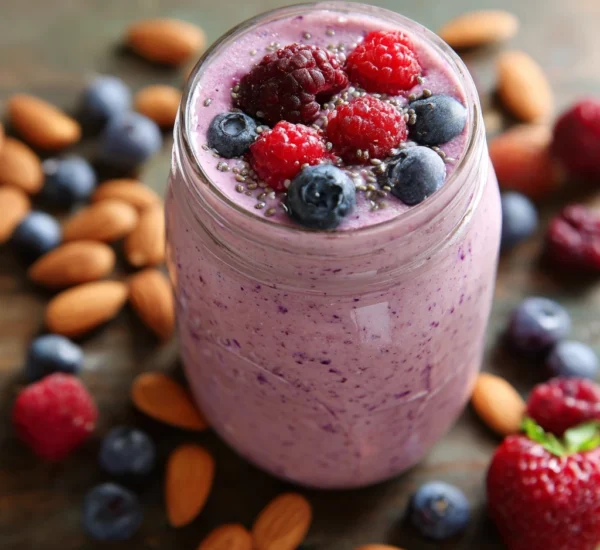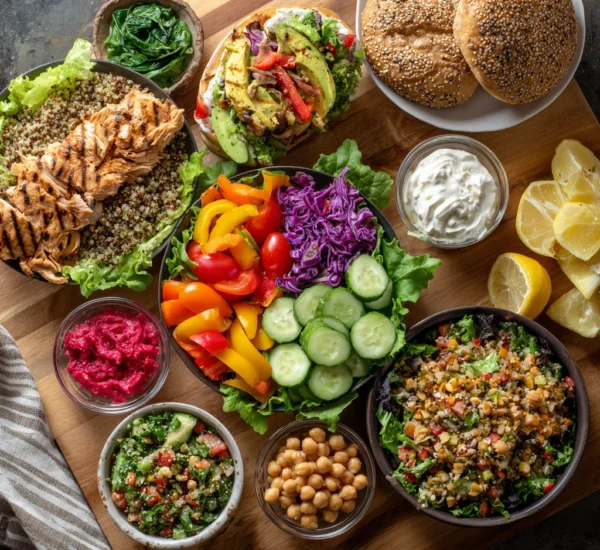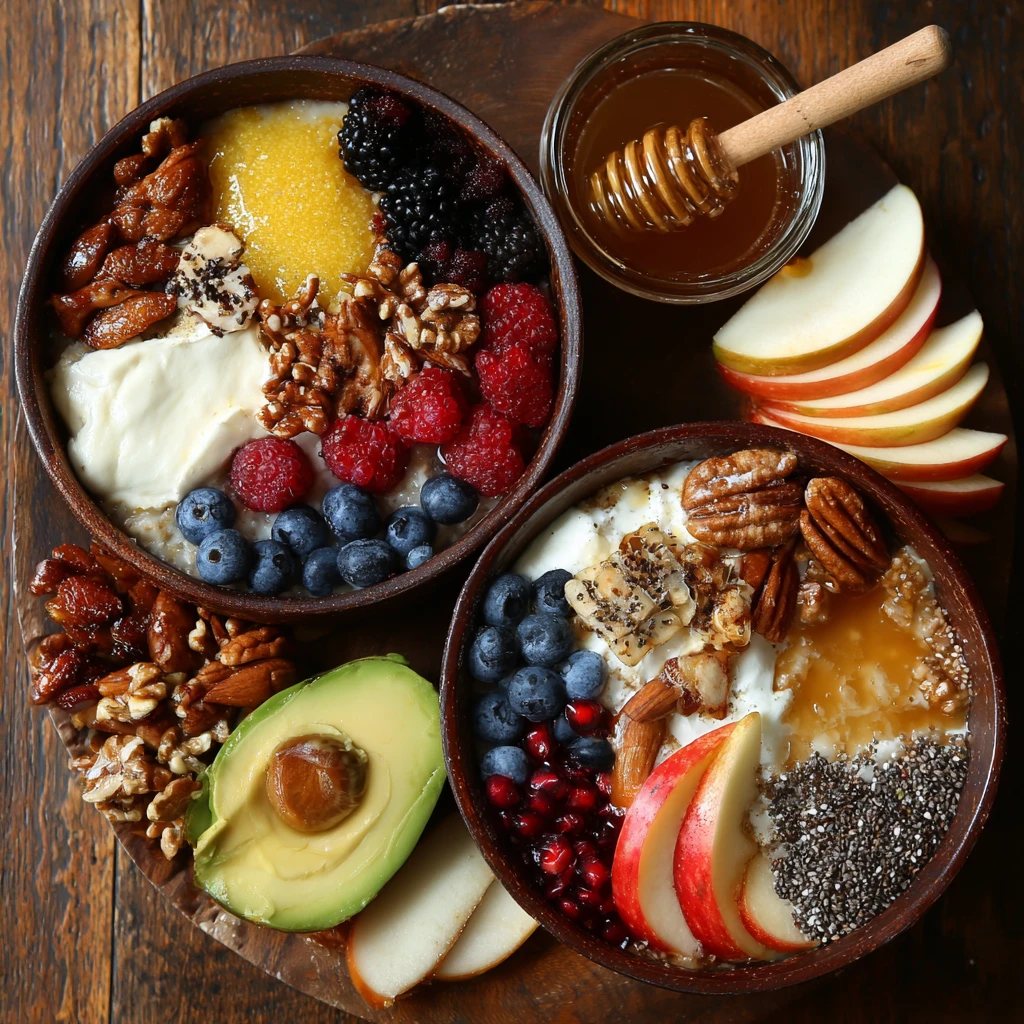Cooking Once, Eating Twice: Smart Meal Planning for a Busy Life
Cooking a delicious and nutritious meal can feel like a luxury in today’s fast-paced world. But what if you could enjoy home-cooked goodness without spending hours in the kitchen every night? That’s where the concept of “cooking once, eating twice” comes in. This clever approach to meal planning involves preparing a larger quantity of food than needed for one meal, and repurposing the leftovers into a brand new dish. It’s a time-saving, budget-friendly, and surprisingly creative way to approach cooking.

Why Cook Once, Eat Twice? The Benefits Unveiled
The appeal of “cooking once, eat twice” extends far beyond simple convenience. It offers a multitude of advantages for busy individuals, families, and anyone looking to streamline their meal preparation.
Time Savings: Reclaim Your Evenings
The most obvious benefit is the significant reduction in cooking time. By doubling or tripling a recipe, you effectively bank time for future meals. Imagine spending Sunday afternoon preparing a large batch of chili, then enjoying it for dinner that night and repurposing the leftovers into chili-cheese fries or chili-stuffed bell peppers later in the week.
Budget-Friendly: Reduce Food Waste and Save Money
“Cooking once, eating twice” inherently reduces food waste. Leftovers are often forgotten and eventually discarded, but with a plan to repurpose them, you’re more likely to use them up. This not only saves money but also aligns with sustainable living practices. By strategically planning your meals around versatile ingredients, you can also take advantage of bulk discounts.
Healthier Eating: Control Ingredients and Portions
Cooking at home allows you to control the ingredients that go into your meals, avoiding excessive salt, sugar, and unhealthy fats often found in processed foods and takeout. “Cooking once, eating twice” encourages mindful portion control, as you’re less likely to overeat when you know you have a pre-planned meal for the following day. This strategy also empowers you to incorporate more vegetables, lean proteins, and whole grains into your diet.
Culinary Creativity: Explore New Flavors and Dishes
Repurposing leftovers isn’t just about reheating the same meal. It’s an opportunity to get creative in the kitchen and transform familiar flavors into exciting new dishes. A roast chicken can become chicken salad sandwiches, chicken tacos, or a hearty chicken noodle soup. The possibilities are endless, encouraging you to experiment with different cuisines and flavor combinations.
Planning Your "Cook Once, Eat Twice" Strategy
Successful “cook once, eat twice” meal planning requires a bit of forethought and organization. Here’s a step-by-step guide to get you started:
Meal Planning and Recipe Selection
Start by identifying recipes that lend themselves well to repurposing. Consider dishes that are versatile and can be easily transformed into new meals. Casseroles, soups, stews, roasted meats, and grains are all excellent choices. When selecting recipes, think about how the core ingredients can be used in different ways. For example, a whole roasted chicken can provide meat for sandwiches, salads, tacos, and soups.
Ingredient Coordination
Plan your meals around a core set of ingredients. This reduces the number of different items you need to purchase and minimizes food waste. For example, if you’re making a large batch of roasted vegetables, choose vegetables that can be used in multiple dishes, such as roasted potatoes that can be used in frittatas, salads, or as a side dish.
Portioning and Storage
When cooking your initial meal, make sure to portion out the leftovers immediately and store them properly. Use airtight containers to prevent spoilage and maintain freshness. Label the containers with the date and contents to avoid confusion. Store leftovers in the refrigerator for 3-4 days or in the freezer for longer storage. Consider using freezer-safe bags or containers for optimal preservation.
Repurposing Ideas and Inspiration
Before you even start cooking, brainstorm different ways to repurpose the leftovers. Search online for inspiration or consult cookbooks for creative ideas. Think about different cuisines and flavor profiles that can complement the original dish. For example, leftover pulled pork can be used in tacos, sliders, or even as a topping for nachos.
Recipes Perfect for "Cook Once, Eat Twice"
Here are a few specific recipe ideas that are ideal for “cook once, eat twice” meal planning:
Roasted Chicken: From Sunday Dinner to Weekday Wonders
Meal 1: Roasted Chicken with Roasted Vegetables. Roast a whole chicken with a medley of your favorite vegetables like carrots, potatoes, and onions. Season generously with herbs and spices.
Meal 2: Chicken Salad Sandwiches or Wraps. Shred the leftover chicken and mix it with mayonnaise, celery, grapes, and walnuts. Serve on bread or in lettuce wraps.
Meal 3: Chicken Noodle Soup. Use the leftover chicken carcass to make a flavorful broth. Add shredded chicken, noodles, and vegetables for a comforting soup.
Meal 4: Chicken Tacos or Quesadillas. Shred the leftover chicken and season with taco seasoning. Serve in tortillas with your favorite toppings.
Chili: A Versatile Base for Multiple Meals
Meal 1: Classic Chili. Make a large batch of chili with ground beef or turkey, beans, tomatoes, and spices.
Meal 2: Chili Cheese Fries. Top French fries with chili and shredded cheese for a satisfying snack or meal.
Meal 3: Chili-Stuffed Bell Peppers. Fill bell peppers with chili and bake until tender. Top with cheese and sour cream.
Meal 4: Chili Mac and Cheese. Combine chili with macaroni and cheese for a hearty and flavorful dish.
Lentil Soup: A Nutritious and Adaptable Staple
Meal 1: Hearty Lentil Soup. Prepare a large pot of lentil soup with vegetables like carrots, celery, and onions. Season with herbs and spices.
Meal 2: Lentil Shepherd’s Pie. Top lentil soup with mashed potatoes and bake until golden brown.
Meal 3: Lentil Tacos or Wraps. Season lentil soup with taco seasoning and serve in tortillas or lettuce wraps.
Meal 4: Lentil Salad. Cool the lentil soup and mix it with chopped vegetables and a vinaigrette dressing for a refreshing salad.
Tips and Tricks for "Cook Once, Eat Twice" Success
To maximize the benefits of “cook once, eat twice” meal planning, consider these additional tips and tricks:
Embrace Batch Cooking
Whenever possible, double or triple your recipes to create a larger quantity of leftovers. This will save you even more time and effort in the long run.
Freeze for Future Use
If you’re not planning to use leftovers within a few days, freeze them for future use. Properly frozen food can last for several months without significant loss of quality.
Get Creative with Seasoning
Don’t be afraid to experiment with different seasonings and flavor combinations to transform your leftovers into new and exciting dishes.
Utilize Your Slow Cooker or Instant Pot
Slow cookers and Instant Pots are excellent tools for batch cooking. They allow you to prepare large quantities of food with minimal effort.
Involve the Whole Family
Make meal planning and repurposing leftovers a family activity. Get everyone involved in brainstorming ideas and preparing meals. This can be a fun and educational way to teach children about healthy eating and cooking.
Inventory Management
Keep track of what you have in your refrigerator and freezer to avoid food waste. Create a simple inventory list and update it regularly.
By incorporating these strategies into your routine, you can transform your cooking habits and enjoy delicious, home-cooked meals without spending countless hours in the kitchen. “Cooking once, eating twice” is a sustainable, efficient, and creative approach to meal planning that can revolutionize your relationship with food.

Frequently Asked Questions (FAQ)
Q: How long can leftovers safely be stored in the refrigerator?
A: Leftovers should be stored in airtight containers in the refrigerator and consumed within 3-4 days.
Q: Can I freeze leftovers?
A: Yes, most leftovers can be frozen for longer storage. Use freezer-safe containers or bags and label them with the date and contents. Frozen leftovers can typically be stored for 2-3 months without significant loss of quality.
Q: What are some easy ways to repurpose leftover roast chicken?
A: Leftover roast chicken can be shredded and used in chicken salad sandwiches, tacos, quesadillas, soups, and salads.
Q: Is "cooking once, eating twice" a good way to save money?
A: Yes, “cooking once, eating twice” can help you save money by reducing food waste, encouraging mindful portion control, and allowing you to take advantage of bulk discounts.
Q: What are some tips for preventing leftovers from drying out when reheating?
A: When reheating leftovers, add a splash of water or broth to prevent them from drying out. You can also cover them with a lid or plastic wrap while reheating.
Q: Is it safe to reheat leftovers multiple times?
A: It is generally safe to reheat leftovers multiple times as long as they are properly stored and reheated to a safe internal temperature (165°F). However, reheating leftovers repeatedly can affect their texture and flavor. It is best to only reheat the portion you intend to eat.
Q: What type of food works well for cooking once, eating twice?
A: Soups, stews, casseroles, chili, grains and roasted meats work well.
Q: How can I avoid getting bored with leftovers?
A: Get creative with repurposing and experiment with different seasons.



